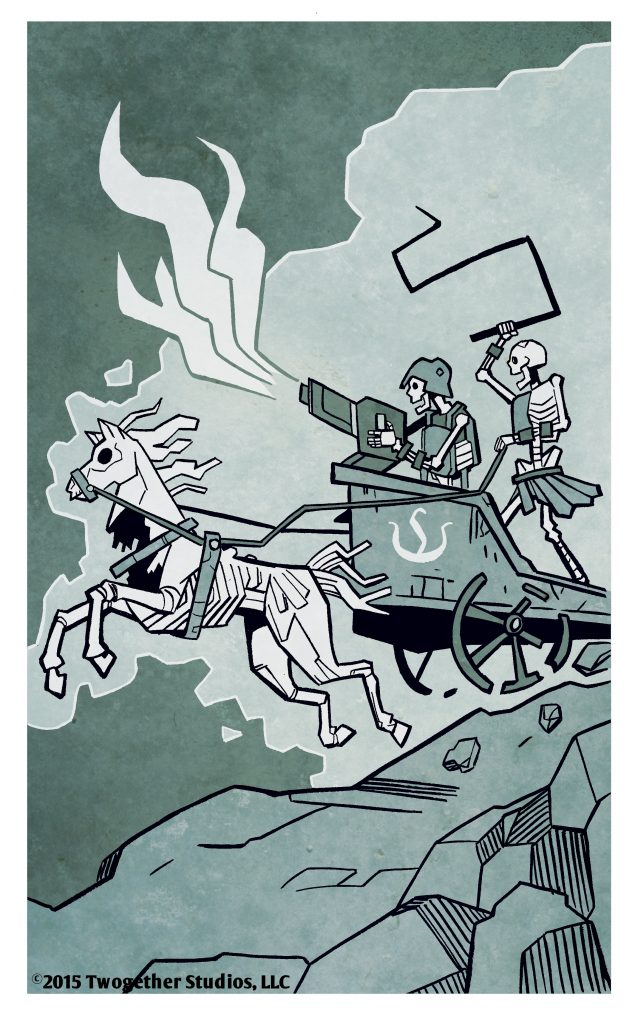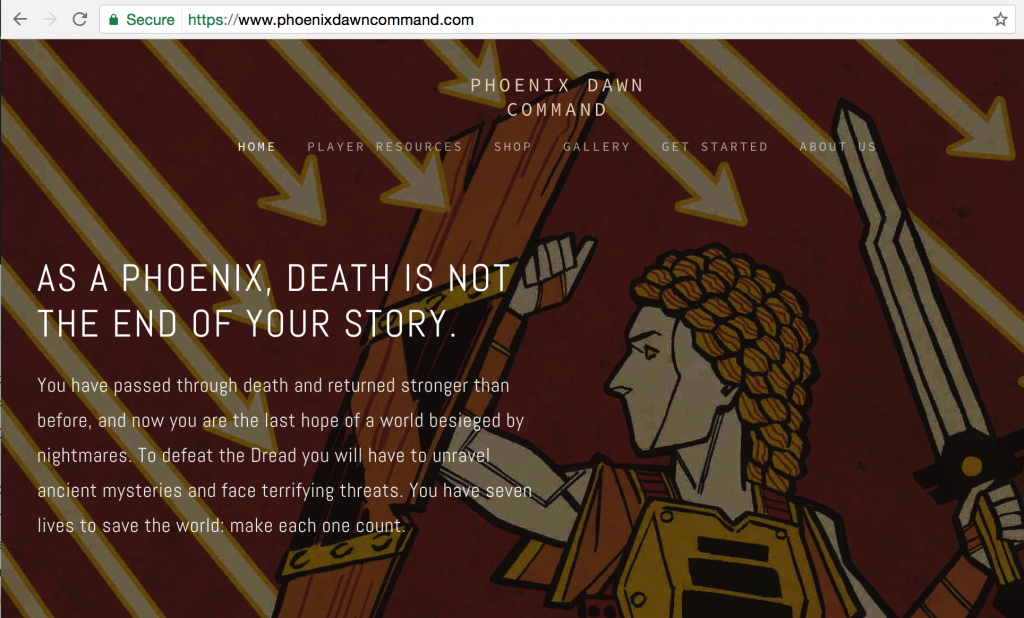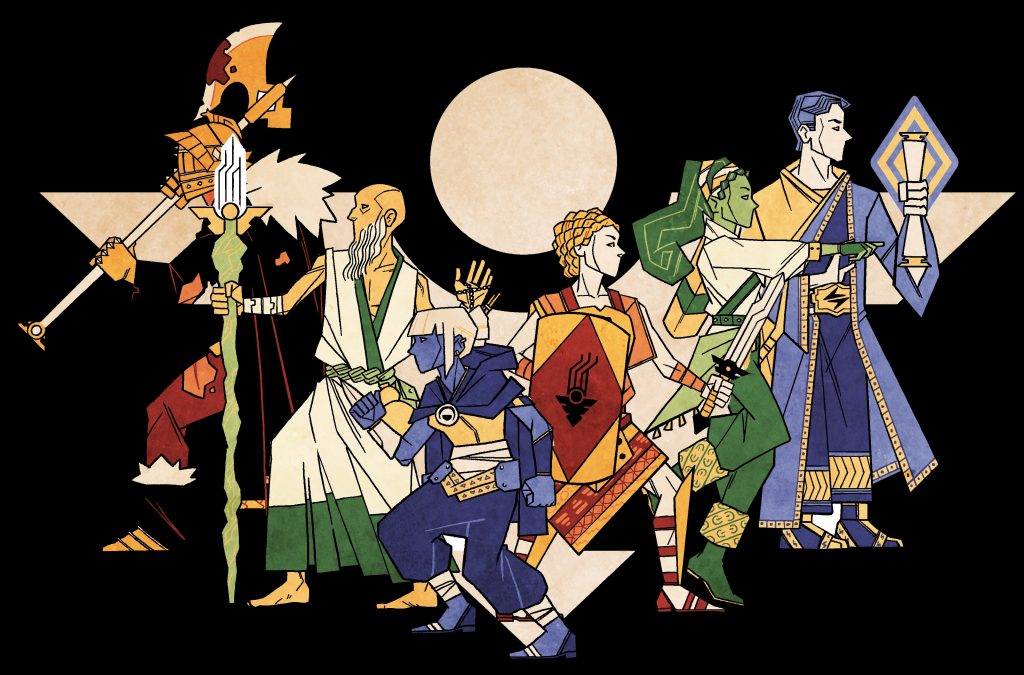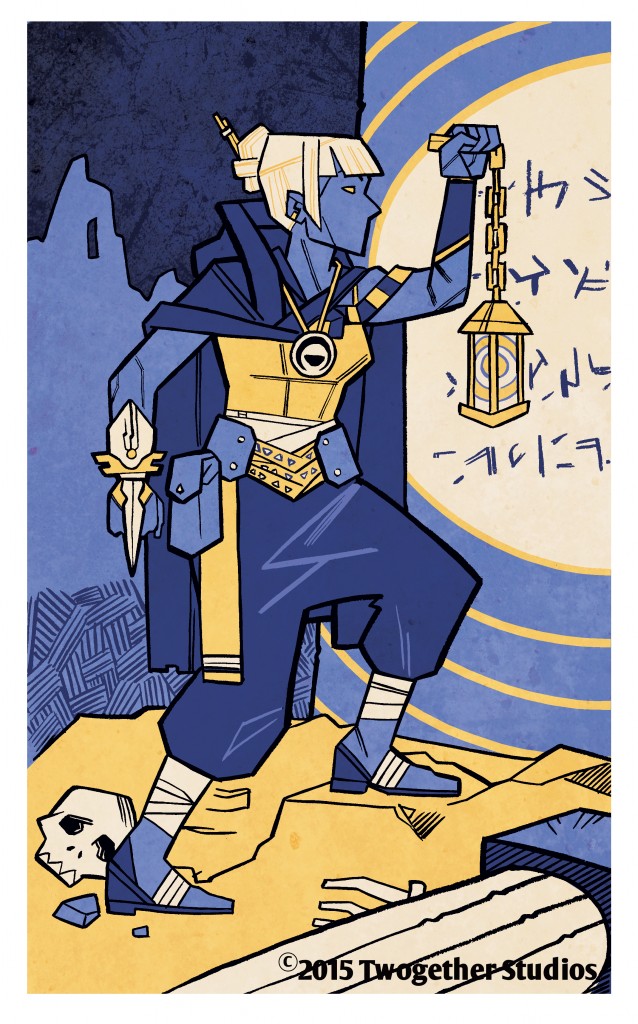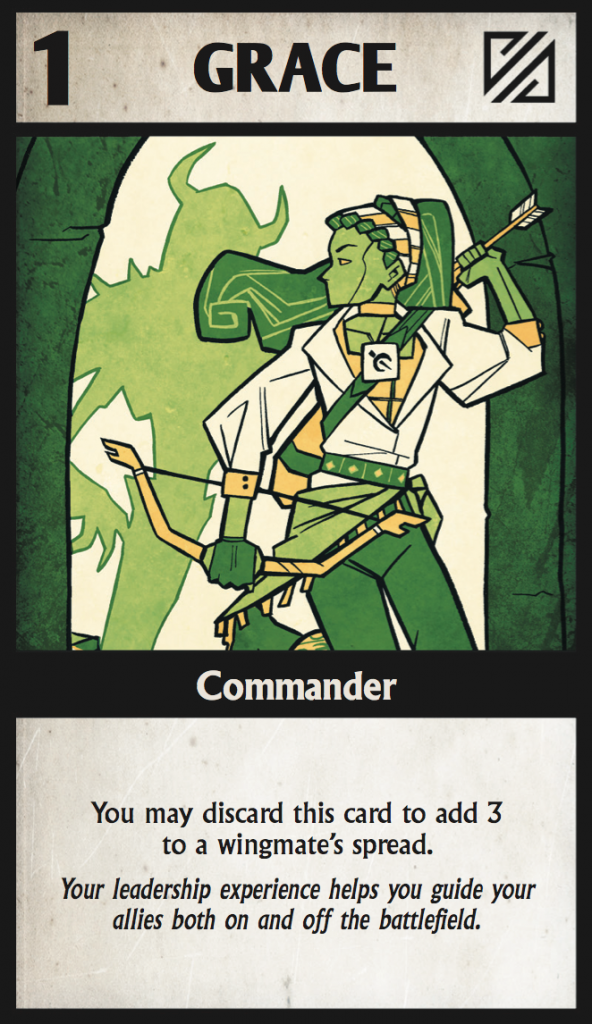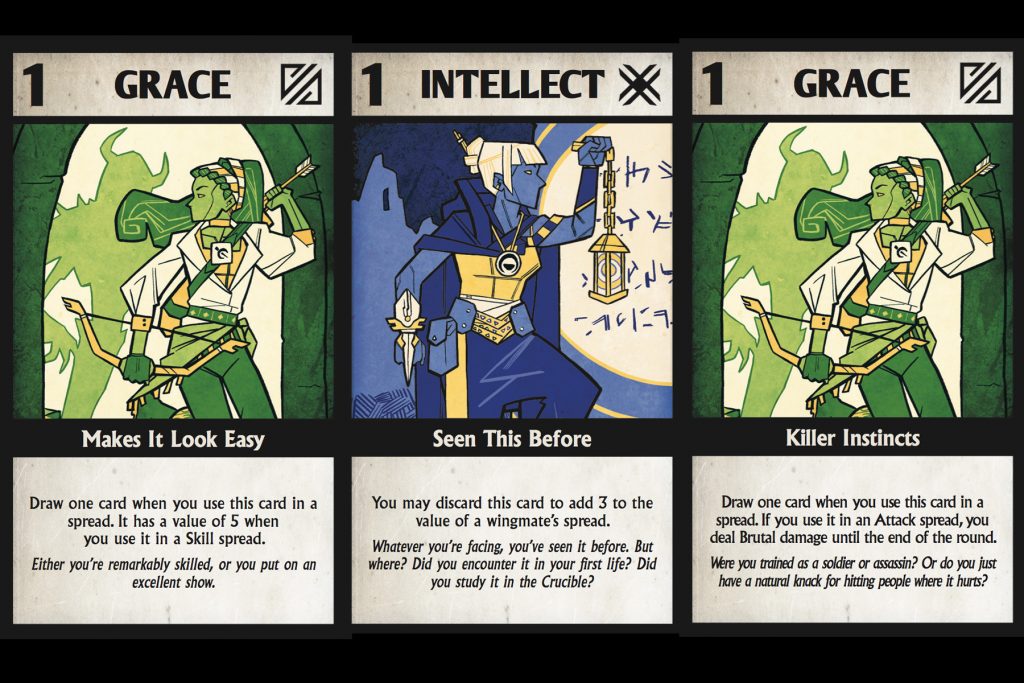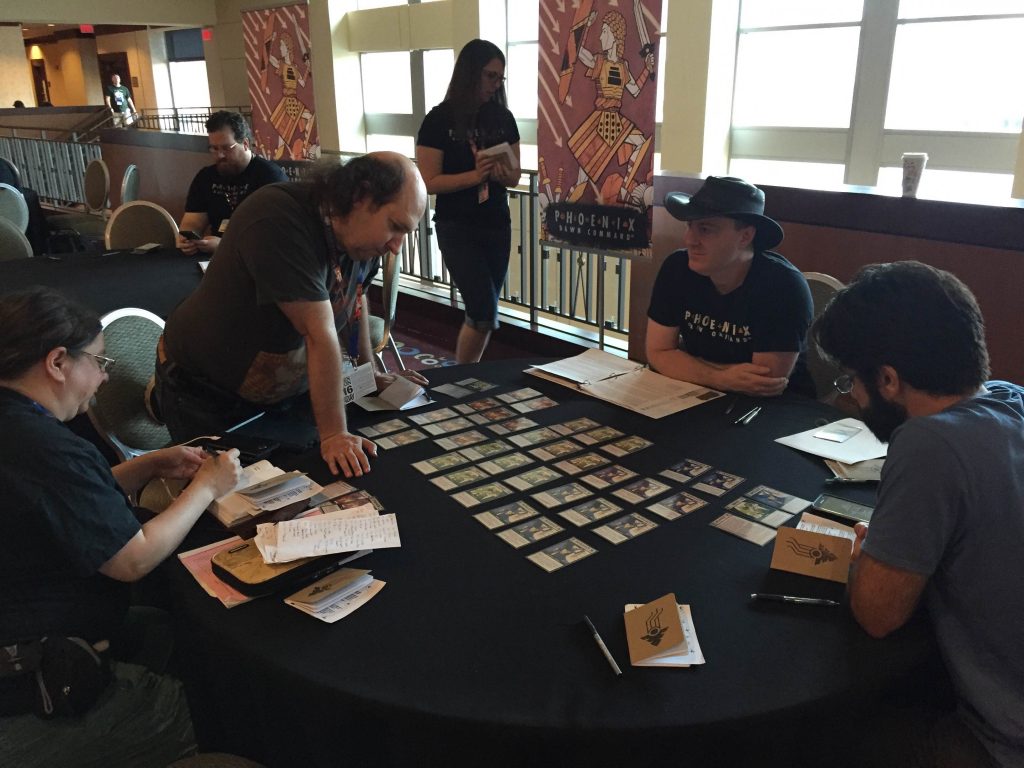Over the last three years I’ve developed Phoenix: Dawn Command with my friend Dan Garrison. This fantasy RPG is now available, and in the weeks and months ahead we’re going to be producing new material for Phoenix. I’ll keep you posted about the availability of new missions and cards. In the meantime, I’m going to be posting a variety of Phoenix material here. This is the first installment of Imperial Dispatches. This series will delve deeper into the world of Phoenix, providing insights for players and GMs alike; GM-only tips for using the Fens can be found here. I hope that this material may prove useful even if you’re not playing Phoenix, and you can find ideas for adapting the Fens to Eberron here.
Without further ado, let’s explore to the Daylit World…
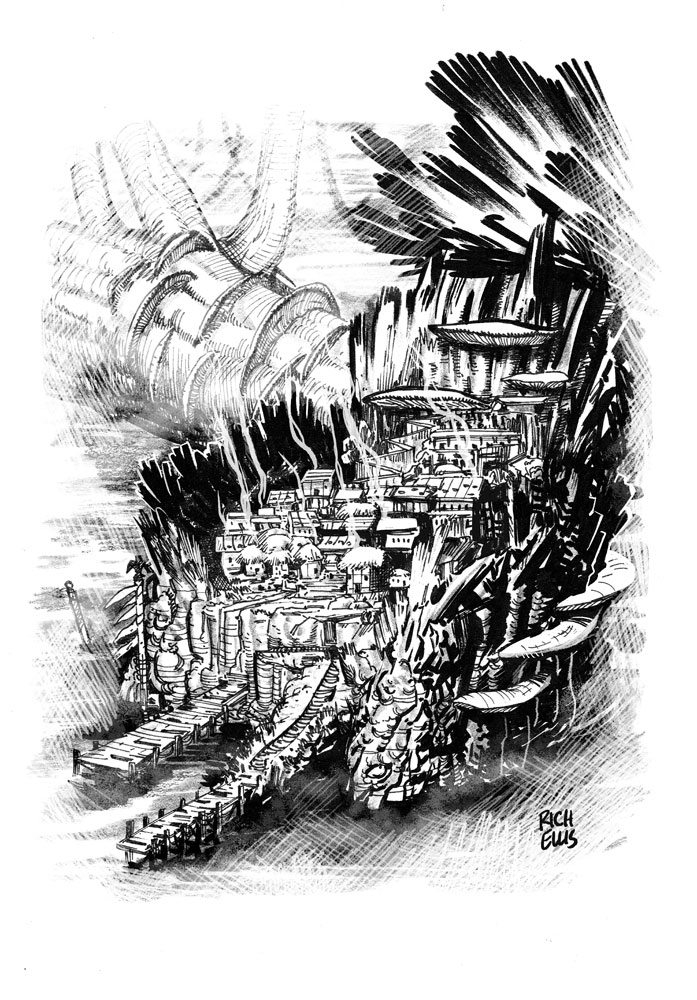
You live in a sunlit valley, surrounded by butterflies and songbirds. You think that the world is a good place, and you don’t understand how the terror that haunts you now could possibly exist.
My family lives in the bones of giants, and we scrape those bones to earn our bread. We tell our children stories of the sun, for they have yet to see it with their own eyes. And we warn them not to stray too far from the paths, lest they be consumed. This Dread is new to you, but I have lived with it all my life. And I will drive it back to the shadows where it belongs.
The Fens are a marshy peninsula in southern Ilona. Sunlight struggles to penetrate the dense canopy, and venomous reptiles and blind leeches flourish in the shadowy swampland. But the most remarkable feature of the Fens are the Titans. These are ancient trees, stretching over a mile into the sky… at least, back when any of them were standing. The Titans fell before humanity settled in the Fens. No one knows what brought them down, but their stumps are jagged and suggest tremendous force. It’s been thousands of years since they fell, yet the Titans remain. Some primal magic infuses their wood, preserving them from the ravages of time and the elements.
The fallen Titans form the foundation of the Fens, forming a stable platform in the otherwise inhospitable swamp. The Fenfolk have raised villages on the stumps of the Titans, and the great city of Baroch is carved into the largest Titan in the Fens. Over the centuries vegetation has taken root on the trunks of Titans, and Fenfolk tend gardens on the trunks even while they carve lumber from elsewhere on the same tree. Titan wood is a valuable commodity, prized across the Empire for its durability. The Fens are also home to leeches with remarkable medicinal properties; Fen leeches cleanse infected wounds and help calm patients. Despite these precious resources, few people choose to immigrate to the Fens. It’s dark, dank, and filled with dangerous creatures. The Fenfolk are generally seen as backwards and ignorant.
So what drew people to the Fens in the first place? Another rare resource: gods. In the days before the Empire, the Talu families of Ilona maintained their rule through the power of their House Gods. These powerful spirits were bound to both location and bloodline, and an enterprising group of scholars theorized that the key to gaining power was to find spirits that had yet to bond to any bloodline… which meant searching in the least hospitable lands that they could find. They found what they were searching for in the Fens. The greatest of these became the House Gods of the Bar Talu and the Myr Talu. But even beyond this, the settlers found there were many lesser spirits in this land. These spirits bond to living creatures, enhancing their power and strength. This was one of the dangers of living in the Fens, as these bond-spirits produced unnaturally fierce beasts in the wilds. But occasionally one of these spirits could be drawn to aid a family, binding to a hound, cat, or snake that would assist its keepers. The Talu families wielded the greatest power, but lesser folk took pride in the spirits that bonded with their lines.
When the first Phoenixes conquered Ilona, the Fens were the last region to surrender. Between their knowledge of the environment and the power of their gods and bond-beasts, the Fenfolk were difficult to dislodge. Ultimately the Devoted Legion broke the power of the House Gods and banished the bond-spirits, and the Fenfolk were forced into the new Empire. But they never embraced its ways. The House Gods may have been trapped in the Dusk, but many Fen families held to their old traditions, offering sacrifices to the gods and honoring their bond-beasts. The Fens were one of the strongholds of the Humanists before and during the Civil War, and they rejoiced when Justice finally fell. Given this, the actual rise of the human imperium was something of a disappointment. Many Fenfolk dreamed that the downfall of the Phoenixes would mean the restoration of their gods and spirits. As is, most see the human Emperor as little better than the Phoenixes… Just more arrogant people from soft green lands telling them what to do. Cults of Baroch and Myrn flourished, preachers swearing that the time was nigh when the spirits would return to the people. Instead of this — and some wonder, could it be because of it? — the Dread came. The Dread has indeed brought bond-spirits back to the Fens, but they have been twisted by the darkness. Rather than being loyal guardians of the people, these spirits turn the creatures they bond with into savage monstrosities. The great city of Myrn was brought down by warped beasts. The dead have risen from the depths of the swamps to prey on their descendants. And some say nature itself is fighting back against the Dread. Whatever the truth, most of the Fens have fallen. Baroch is the last great stronghold, with a few stumptowns remaining in its orbit.
GEOGRAPHY
The true foundation of the Fens are the roots of the Titans, now supplemented by mangroves and other wetland vegetation. Rivers and streams wind through mazes of tangled vines and branches. These are punctuated by the fallen Titans and their jagged stumps, which can have a diameter of up a third of a mile. The Titans add a vertical element to the landscape; many are overgrown with lesser vegetation, cracks or gaps in a broken trunk can serve the same roles as caves in stone; many creatures make their lairs on or in the Titans. The people of the northern fens generally make their homes in stumptowns, densely packed fortress-villages built onto or carved into the stumps of the Titans. To the south, the Fenfolk lived in more broadly dispersed towns… which may be one reason they fell more quickly to the Dread.
There is one main road that runs through the Fens, with titanwood bridges providing passage across the rivers and through the worst of the mires. But the simplest way to get around in the Fens is by boat, and every community has a collection of small boats available.
CULTURE
The Fens are part of Ilona, and Ilonan culture can still be seen in the Fens. The Talu families form the core of the major communities, and even those who live far from the great cities consider themselves to be tenants of one of the great lines.
The Barochai
The Barochai are the people of the northern fens, aligned with the Bar Talu. Baroch is the name both of the greatest of their House Gods and of the fortress city that serves as their seat of power. The Barochai are lumber miners, and they see the Fens as an enemy to be tamed and used. They live in stumptowns, densely populated communities carved into the stumps of Titans. The Barochai are grim and stoic people; they believe that everything worth having must be fought for, and that the world is always waiting for you to let down your guard. Yet if presented with the opportunity to live in a more pleasant land, a Barochai would scoff at the idea. Everything worth having must be fought for, but it’s the fight that makes it worth having; the plenty of the green lands makes the people weak and complacent. Given this, the Barochai have largely taken the Dread in stride; the world has always been against them, and they will simply continue to fight.
While there is a general sense of cultural unity, Barochai generally put their own families ahead of their community; charity and compassion for others aren’t as important as ensuring the survival of one’s own kin. Every major Bar family has a bond-beast that serves as the heraldic symbol for the family, and that is often the source of the family name. This doesn’t reflect any sort of harmony with nature; the Barochai earned the allegiance of their bond-spirits through strength, bending the spirits to their will. While the bond-spirits were banished centuries ago, families still keep mundane animals of the same type as their bond spirits as symbolic representatives. There are many stories of Fen cults who perform sinister rituals and even human sacrifice in order to strengthen their bond-spirits or call on the favor of other spirits of the Fens, but most of these stories are exaggerated.
The Bar Talu rule the northern Fens, and every stumptown is built around a Talu keep. They enforce justice, and while they generally abide by the letter of Imperial law, justice is swift and harsh. The Barochai respect strength, and they fear military leader Jonan Baragius… and they expect no less from the man they believe can protect them from the dangers of the Fens. Even in the face of the Dread, most of the Barochai aren’t looking for Phoenixes to save them; they believe Baragius will keep them safe.
The Bar Talu are based in the city of Baroch, a sprawling fortress carved into the trunk of the largest Titan yet to be discovered. It has spread throughout the trunk of the ancient tree, and towers rise up from the swamp around it. Baroch bears the scars of many sieges, and so far it has survived the predations of the Dread. It’s also the trade hub for the Fens, and has always supported a transient population of farmers, fisherfolk and leech-harvesters bringing goods that the Bar Talu deliver to the rest of the Empire. This transient population has swelled dramatically with refugees from the south, along with northerners who fear that their stumptowns offer insufficient shelter from the Dread. This crowding is a source of growing tension, and many northerners feel that the Myrai should be driven out of the city and left to fend for themselves.
The Myrai
The Myrai are the people of the southern fens, aligned with the Myr Talu. Myr is the chief House Goddess, and the city of Myrn is her seat of power. The Myrai are primarily fisherfolk, farmers, and leech-harvesters, and they ask Myr for good fortune and bountiful harvests. Legend has it that when the House Gods were banished, Myr remained by tying her spirit to a vast water serpent. The Myrai say the divine serpent sleeps in the deep waters where no Phoenix can find her, but even in her slumber she hears the prayers of her people. The Dread and the loss of Myrn has certainly shaken this faith, but many maintain that the serpent will soon wake from her slumber, and Myr will rise to save her people.
The city of Myrn was the seat of the Myr Talu and the largest city in the Fens — not so well fortified as Baroch, but spread across a wider area. It was renowned for Myr’s Fountain; built by the goddess in the days before the Empire, the waters of this well have remarkable restorative properties. Myrn was the center for the fishing industry and for leechcraft and healing, or at least it was until the city was lost to the Dread one year ago. Some say that it was overrun by a horde of twisted creatures; others say that a curse fell upon the city and turned its people into warped monsters. So far there are no known survivors of the fall of Myrn, and the exact details and fate of the city remain a mystery. The Dread has spread throughout the southern Fens, and the Myrai have been driven north where they are seeking shelter in the stumptowns of the Barochai.
Where the Barochai see the Fens as an enemy to be defeated and brought to heel, the Myrai seek to live in harmony with their environment. Their villages are generally spread out across Titan trunks instead of being carved into the wood. They’re at home on the rivers and farming fingal gardens, and take care not to over-fish a region. They take pride in their long-banished bond spirits, but they see these spirits as allies whose loyalty was won by their ancestors, not beings forced into service. The Myrai have a strong sense of community that goes beyond family, and this has helped them in their recent exodus; most Myrai will do what they can to help anyone in need, though some limit this compassion to other Myrai. There are stories of cults among the Myrai, who have also sought to call back the spirits of the Fens. However, such cults are rarely violent, and are more about continuing ancient rites that are supposed to strengthen the spirits and preserve the balance of Dusk and Daylight.
More than any other Talu lines, the Myr Talu always sought to aid their tenant families and put the overall good of the region ahead of their personal wealth and power. The leaders of the house were lost in the fall of Myrn and the survivors are scattered with the other Myrai refugees, though many continue to act as community leaders. Vesta Myrasa guides a large group of refugees in Baroch and seeks to mediate disputes with angry Barochai; meanwhile, Valius Myragi negotiates with the Bar Talu, trying to convince the nobles of the north to show compassion for the refugees.
IF YOU’RE FROM THE FENS…
- Where are you from? Were your roots in Myrn or Baroch? Did you harvest lumber or work on the water? Do you view the natural world as an ally or an enemy?
- What’s your connection to the Talu? Were you a noble, directly tied to the Bar Talu or the Myr Talu? Were you a member of a lesser branch of the family? Were you a simple tenant, and if so did you respect your ruling house or despise it? Or were you independent, a farmer living far from any town or a fisher who called a boat home?
- Do you respect any of the House Gods? A few of the House Gods are described below, and you can develop others. While the House Gods were banished in the Conquest, many in the Fens still respect the old ways and gods. Do you believe you have a connection to one of the gods? How does this affect you?
- Did your family have a bond beast? Even if the spirit was banished long ago, a bond beast reflects the values and history of a family. Did your family have a bond beast? What was it, and what does it mean to you?
- How do you feel about the Empire and the Phoenixes? The Fenfolk were the last Ilonans to be conquered and the first to rebel, and many have little love for Emperor Dolanti. Do you believe in the Empire and want to restore it, or are you only concerned with protecting the Fens? Likewise, in all the Empire it’s hard to find a place with less love for the Phoenixes. How did you feel about Phoenixes in your first life, and has that changed since your rebirth? You wouldn’t have made it through the Crucible if you weren’t willing to work with Dawn Command and to fight the Dread… but have you embraced the Phoenix cause, or do you go along with it because you believe it’s the only real chance to defeat the Dread?
- What do you miss? Fen cooking involves a lot of fish and fungus, along with eels and leeches. The thick canopy of the Fens filters out much of the sunlight, and bright days and broad fields are equally unnatural for you. Serpents, hounds, and swamp-cats are all common pets, and a few Fenfolk keep lizards. In the Fens you’re never far from water, though that comes in the form of shallow pools and rivers as opposed to the vast sweep of the Inner Sea.
HOUSE GODS AND BOND BEASTS
In the days before the Empire, the Talu families of Ilona ruled through the transcendent power of their House Gods. The House Gods are spirits possessing tremendous magical power, but unlike the Fallen Folk of Skavia they cannot manifest on their own. In order to interact with the world they require mortal hosts – children from their Talu lines. The hosts are still mortal, and when a host dies or becomes unsuitable the spirit moves to a new host. For centuries the House Gods were the champions of the Talu lines. During the Conquest, the Devoted Legion perfected a ritual for exorcising and banishing the House Gods. It has been centuries since a House God has manifested in the Daylit World, but with the rise of the Dread the walls between the world and the Dusk are growing thin and it’s possible a House God could return. More information about the House Gods and their capabilities can be found on page 205 of the Guidelines for the Newly Inducted Marshal.
Each of the Fen Talu had about six gods in their pantheons. While the gods could only affect the world through their avatars, the Talu encouraged their tenants to think of their gods as all-seeing and capable of affecting any action within their sphere. Many tenant families pledged loyalty to a particular house god, and believe that the god still watches over them or guides them today, even though it has been centuries since any of the gods have manifested.
Bond beasts are a lesser form of the bond-spirits. Instead of merging with a human, a bound beast is a spirit that inhabits the body of a particular type of animal. In many ways, bond beasts served as the House Gods of the tenant families that possessed them. According to legends, some bond beasts were fully sentient and could advise and guide their family. Others were simple paragon examples of their type. The Orlan Hound was an unnaturally large and powerful dog, and whenever the Hound was slain a new one would take its place.
Here are a few notable House Gods and bond beasts from the history of the Fens, but as Marshal or player you can expand this list to meet the needs of your story.
Barochai House Gods
- Baroch, The Bringer of Fire. Chief god of the Bar Talu, said to have carved the foundations of the city that bears his name. He rewards innovation and industry, granting strength to those who make sacrifices in the name of progress. His name comes the principle that one must burn wood to release fire; one must be willing to pay the cost of progress.
- Xaria, The Huntress in Shadow. Where Baroch encourages his followers to bend wood and stone to their will, Xaria teaches them to bring down the beasts of the wild. She is also the chief war goddess of the Bar Talu, though she advocates victory through stealth and guile; it’s said that her cult of assassins still operates in the shadows of the Fens.
- Seval, The Keeper of the Forge. While Seval is another industrious Barochai god, he focuses on defense of the homestead — on making any sacrifice necessary to protect your hearth and family — which plays to the isolationist element of the Barochai character.
Myr House Gods
- Myr, Bringer of Fortune. The primary goddess of the Myr Talu, she is responsible for all the bounty that comes from the waters — fish for food, leeches for health — and in general for restoration, fertility and health. She is a merciful goddess who shares her bounty with those suffering from hardship.
- Taeloch, The Serpent in the Water. Taeloch ensures that justice is done, especially to those who prey on the weak or helpless. Taeloch’s punishments often involve drowning, either literally for those whose crimes call for execution or simulated as a form of discipline. A cult of Taeloch might take vigilante action against those who wrong Myrai refugees.
- Lassia, The Merciful Mother. A lesser Myrai goddess, Lassia oversees healers and midwives. She inspires healers to find new solutions to difficult problems, and provides safe and painless births. With that said, she is a goddess of the Fens, and the Fens are a harsh land; part of her portfolio is granting a merciful and painless death to ease the suffering of those she cannot heal.
Bond Beasts
- The Orlan Hound. This mighty beast was the guardian of a Barochai tenant family. Once the spirit took hold of the hound, it grew to the size of a pony. While the hound couldn’t speak, it could sniff out any deception. The last incarnation of the Orlan Hound was slain by a Durant Phoenix during the Conquest.
- Salassa. This bond beast took the form of a small serpent, and was noted for its wisdom instead of its might. It coiled around the neck of the head of its family and would whisper secrets and advice into the bearer’s ear, warning them of deception and dangers. Salassa could detect lies, and while she protected her family from those who would deceive them, she also demanded that they live an honest life; in her last incarnation, she throttled her bearer when he betrayed his family for personal gain.
- The Count of Shadows. The Fens are home to wildcats with mottled black fur that renders them almost invisible in the shadows. The Count of Shadows was such a cat, and it claimed to know all things seen by every cat in the Fens. The Count advised its family, guiding them through cunning schemes that could bring them great fortune if they were willing to take the associated risks. It’s said that during the Conquest, the Count faced off against a Shrouded Phoenix. Some say the Phoenix killed the cat; others say that the Phoenix helped it escaped, in exchange for the Count’s pledge to aid all future incarnations of the Phoenix.
POINTS OF INTEREST
Baroch and Myrn are the largest cities in the Fens. There are a host of smaller communities — the densely populated stumptowns of the Barochai and the smaller farming villages of the south. Here are a few other locations familiar to every denizen of the Fens.
The Bloody Mire. This is one of the largest areas of pure swamp, with no Titans providing a foundation for structures. The greatest Talu victory in the Conquest came when a joint effort by Myr and Bar drove Imperial forces into the mire. Both sides suffered terrible losses in the conflict, and it’s said that the area is still stained with the blood of the fallen… though in fact, it’s microorganism that gives the shallow waters the distinct crimson coloring. The Bloody Mire has important symbolic value for the Fenfolk, but even before the Dread it’s always been said to be a haven for hungry ghosts and forlorn spirits; most Fenfolk appreciate the idea of the Mire, but keep their distance. Should the Dread take root in the region, the Bloody Mire is a likely source for Bones and other restless dead.
The Deadfall. Typically the Titans are widespread, and it’s rare to find two in contact. The Deadfall is formed from five fallen trees. Over the course of thousands of years, layers of vegetation and sediment have formed a maze of passages between the trees. The Deadfall has always been close to the Dusk, and in the past families would travel to the Deadfall to try to earn or claim the favor of a bond beast. The Devoted Legion placed wards in the region, but the Deadfall is still a favored gathering place for Fenfolk who hold to the old ways. With the Dread, it’s possible that the bond-spirits have returned… though who can say what this means?
Deep Wells. For the most part, the waters of the Fens are relatively shallow. However, there are a few places where the waters deep… so deep that the Fenfolk say these wells have no bottom. Legend maintains that the deep wells are home to massive water serpents and other monsters. There are legends of such creatures, but none have been seen in living memory and most maintain that these are merely stories.
Sentinel Holt. The Titans were all felled long ago… all save one. The Sentinel is a tree that towers over the region; over a mile in height, it stretches high above the canopy around it. The Myrai established a community on the tree, making their homes on its vast branches and knots. There’s been no contact with Sentinel Holt since the Dread overtook the southern Fens, but it’s possible that the tree-folk have been able to hold out against the Dread and are in need of assistance…
TITAN WOOD
The Titans are an important resource in the Fens. The wood of these ancient trees is infused with magic that gives them the general strength and durability of stone or even steel. Beyond using Titanwood to construct their homes, the people of the Fens use this wood for many things that would be made of other materials elsewhere in the Empire. Weapons and armor are a notable example. Knives, swords and shields are generally made from Titanwood. Short spears are common within the Fens, used both for protection and as useful walking staves. Titanwood is general very resistant to flame, but if prepared and treated properly can burn — even then, a Titanwood block can burn for days. All of these things make Titanwood a useful commodity beyond the Fens, and the major industry of the Barochai. Harvesting Titanwood is more akin to quarrying stone than to the work of a traditional lumberjack; blocks are removed from the vast trunks of the Titans, and shaped into the forms that will prove most useful in the world beyond. In general, when dealing with the Fens stop any time you’re dealing with something that would normally be made of metal or stone and consider if it could be made from wood, and how that would change the flavor.
�Follow this link if you’re a Marshal looking for ideas about how to use the Fens in your campaign. If you’re playing Phoenix and would prefer to be surprised, you might want to stop here. If you have questions about Phoenix or the Fens, ask below!
 The world of Phoenix: Dawn Command is dealing with an unfolding supernatural threat. The Dread can strike anywhere in the known world, and it takes many forms. The dead rise to prey on the living. The laws of nature are broken. Communities fall prey to mass hysteria, or to malevolent spirits banished long ago that have now returned. Essentially, the entire world of Phoenix is slowly becoming the Mournland… but it’s happening piece by piece.
The world of Phoenix: Dawn Command is dealing with an unfolding supernatural threat. The Dread can strike anywhere in the known world, and it takes many forms. The dead rise to prey on the living. The laws of nature are broken. Communities fall prey to mass hysteria, or to malevolent spirits banished long ago that have now returned. Essentially, the entire world of Phoenix is slowly becoming the Mournland… but it’s happening piece by piece.
